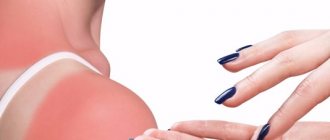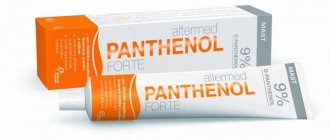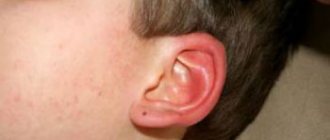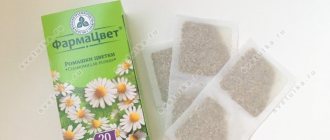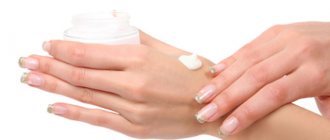We encounter acids in chemistry lessons, when, under the guidance of the teacher, we carefully fill test tubes with them and mix them with various reagents. But the experience of handling concentrates and solutions must be retained for life. Each of us will need this in everyday life. For example, everyone has acetic acid in their kitchen. Burns from this substance are a fairly common household injury. Children especially often find a bottle with an interesting liquid. Today we will consider the features of providing first aid in this case.
It's easier to prevent than to cure
Restoring the skin, and even more so the mucous membranes lining the internal organs, requires quite a lot of time. An acetic acid burn is a fairly serious injury, so you should do everything you can to prevent this from happening in your home. Only 70% acid is the most dangerous because it is concentrated. At home it is practically not used. Table vinegar is used for salads and baked goods. Therefore, when buying an essence, you can immediately dilute some of it. To do this, take one part acid and ten parts water. The result is 9% table vinegar, which is quite safe and will not cause a burn if it comes into contact with the skin. And the bottle with the essence needs to be put away as securely as possible.
Sometimes we ourselves can inadvertently get burned by acetic acid. While preparing for the winter, you may accidentally spill a little acid on your shirt. It will not be noticeable at first, but the composition is absorbed into the skin. As a result, a burn develops. After a while you may feel pain. In this case, you need to quickly remove clothes and assess the condition of the skin.
An acetic acid burn requires immediate attention. To do this, rinse the affected area well with water. To do this, it is better to use a low pressure of slightly warm water. Rinse for at least 15 minutes. During this time, prepare a soap or soda solution. They need to wash the affected area well, and then immerse it again under running water.
Features of development and manifestations
When acetic acid comes into contact with the tissues of the human body, it corrodes them in a matter of minutes, so the victim needs help immediately. If this trouble occurs to a child, you must urgently take him to the hospital.
An internal burn with acetic acid can be fatal for both a child and an adult; only doctors can save such a patient.
In addition, the concentration of vinegar can vary, from 6% to a stronger solution called vinegar essence (80%). Burns to the legs, feet and other parts of the body occur upon contact with any of these liquids, but the higher the percentage of acetic acid, the more serious the injury and the more dangerous its consequences.
Symptoms of internal damage
An external burn with vinegar appears immediately after this substance gets on the skin; a person will see a white spot on the skin, which will turn gray after a few minutes. The manifestations of such an injury are very vivid; pain and burning of the affected area occurs, which become very intense.
If the burns affect the mucous tissue of the esophagus or throat, then the problem is much more serious, since the destructive effect of vinegar is enhanced by the hydrochloric acid contained in this area of the body.
Symptoms of a laryngeal burn:
- Burning and painful sensations in the area of the Adam's apple and larynx.
- Intense pain when swallowing.
- Vomiting and nausea.
- Increase in body temperature to high thermometer readings.
- Swelling of the lymph nodes and pain in this area.
- Excessive salivation.
The degree of complexity of such an injury depends on many factors - the concentration of vinegar and the time that a person spends without medical assistance. The longer the mucous membranes are exposed to this liquid, the more tissue is destroyed and a burn disease occurs.
Stages of burn disease:
- In the first stages, a person feels a shock of a toxic nature, after which the first symptoms of poisoning of the body appear.
- After a short time, toxemia develops - a condition characterized by hyperemia of the skin and acute toxic psychosis.
- The manifestation of various diseases begins, especially gastritis, pneumonia, pancreatitis or peritonitis.
- Burn asthenia, which is characterized by a disorder of electrolyte and protein balance.
Degree of skin damage
Only doctors can adequately assess the condition of the victim, so you should not rely on treatment at home; you should consult a doctor. If the degree of damage from vinegar is insignificant, then the doctor will prescribe effective home treatment.
Degrees of burn injury to the skin:
- first. The upper or first layer of keratinized epithelial tissue is affected, which is manifested by redness of the affected area of the body, pain, and swelling. Complete recovery is observed in such patients after a few days, usually 3-4. The dead layer of epithelium peels off, and external traces of the burn disappear completely;
- second. With such a lesion, the destructive effect of acetic acid is observed, affecting not only the keratinized epithelial tissue, but also the germ layer. The appearance of blisters containing serous substance is a consequence of such an injury. For complete healing of this wound, a longer period is required, about 1.5-2 weeks;
- third. Burns of this degree cause severe damage to the human body. Tissue destruction affects all layers of epithelial tissue, as well as the dermis. The bottom of such an injury is the untouched part of the dermis, on which intact sweat and sebaceous glands, as well as hair follicles, remain. Immediately after the appearance of such an injury, a black or brown scab is observed;
- third B. This stage of the lesion is the most severe. If a strong concentration of vinegar comes into contact with the skin, it completely affects the skin, causing its death, right down to the layers of subcutaneous fatty tissue.
If there is a burn to your legs, arms or face, then first of all you need to rinse the skin with cold water. It is very important to have a loved one nearby who is ready to help.
It is known that the effect of acetic acid can be weakened or completely removed with alkali, so after washing the injury, it is necessary to treat the area with a soda solution.
After these manipulations, you should rinse the wound again with water and apply a damp, cool compress. It is necessary to correctly assess the situation; if the burn of the legs or other part of the body is very severe, medical assistance cannot be avoided.
Assess the condition
If the integrity of the skin is not compromised and the redness is minor, then you can use improvised means. Sea buckthorn oil, fresh potato gruel or a compress with fresh aloe are suitable for this. But only if the patient tolerated the initial treatment normally and does not experience severe pain.
If the surface of the skin turns very white and then begins to darken, it means that the damage is quite serious. Treating a burn with acetic acid is the work of a specialist, most often a burn department surgeon. Apply an antiseptic ointment to the affected skin and apply a bandage to immobilize the damaged area. With this in mind, you need to go to see a doctor and then follow his recommendations.
Treatment for serious damage
In this case, the therapy will be quite serious. It will be necessary to relieve pain. For this purpose, painkillers are prescribed. The wound is treated with anti-inflammatory and antiseptic drugs. Antihistamines are often used. They help relieve swelling and speed up healing. The slightest suppuration is a reason to prescribe and start taking antibiotics.
A person should not be allowed to endure pain. In case of severe damage to the skin, the victim should be offered pain relief and a lidocaine compress should be applied to the damaged area. Sometimes a person develops a fever. In this case, even before the ambulance arrives, you need to give the victim an antipyretic. How to treat a burn with acetic acid on the skin? This should be decided by the attending physician.
Treatment with folk remedies
After basic care has been provided and there is no threat to life and health, you can use traditional medicine recipes for further recovery. This therapy has a minimum of contraindications, but is not always more effective than pharmaceutical drugs. But the advantage of such therapy is its accessibility.
- Mashed raw potatoes. This remedy helps in healing different types of burns. The product must be applied to the damaged area. This vinegar burn ointment relieves swelling and inflammation.
- Sea buckthorn fruit oil. This product helps to quickly restore the skin after a burn with acetic acid. For a therapeutic effect, it is necessary to apply the oil to the damaged area. This procedure must be carried out until complete healing;
- Aloe juice. This remedy helps to get rid of unwanted symptoms and quickly heal. It is necessary to smear until the epidermis is completely restored.
- Oak bark products. Prepare a decoction of 4 tablespoons of bark and 3 glasses of water. Make lotions using a gauze bandage. Leave for 30 minutes. This product helps reduce swelling and has an antiseptic effect.
If no positive dynamics are observed during treatment with these medications, then it is necessary to use pharmaceutical ointments.
Acetic acid is usually included in the set of necessary food ingredients. With a high degree of probability it can be found in the kitchen cabinet of the average family. However, vinegar is a dangerous liquid that can cause burns and should be handled with care.
Photo 1. The storage and consumption of vinegar must be approached with all responsibility. Source: Flickr (Mike Mozart)
Eye damage
Also occurs quite often. Moreover, the situation usually develops the same. The housewife hurries to open the bottle of vinegar, holds it tightly at the base and jerks the cap upward with a sharp movement. After several attempts, it unexpectedly flies off easily and the liquid splashes upward in a fountain. A burn with acetic acid (70%) of the mucous membrane of the eyes can lead to partial or complete loss of vision. The first reaction is a burning sensation in the eye area. Intuitively, your eyes close and you want to rub them with your hands.
What is needed? Get your bearings instantly. Shake a small amount of baking soda into a glass (1 teaspoon) and add water. Rinse the affected area thoroughly with this solution. After this, rinse with clean water and consult a doctor immediately. Further treatment will depend on how much acid has reached the mucous membranes and whether you managed to neutralize its effect quickly enough.
Causes
A special feature of vinegar essence is that upon contact with organic substances, it instantly causes denaturation of proteins. As a result, the tissues are destroyed, and the process is accompanied by the release of water. When acid comes into contact with the human body, tissue death occurs - necrosis.
Vinegar can injure the skin if its concentration exceeds 30%.
You can get a burn in various ways:
- in case of accidental overturning of the container with essence or careless handling of it;
- as a result of negligence in storing substances dangerous to human life and health - this especially often affects young children and the elderly, who may accidentally swallow a small amount of acid left in an easily accessible place;
- as a result of criminal acts where someone deliberately pours essence on another person.
Internal burn
Sometimes children manage to get to a bright bottle, and before their parents have time to react, they drink the interesting-smelling liquid. In this case, an internal chemical burn with acetic acid results, which can threaten life and health. Now everything will depend on how quickly you react and can provide first aid to the victim.
The danger may be that vinegar essence can lead to necrosis of the tissues of the mouth, pharynx, esophagus and stomach. Acid ingestion on an empty stomach is especially dangerous. If a large amount of acid is ingested, peritonitis may develop due to the formation of open ulcers in the walls of the stomach and intestines.
Medical treatment of burns with vinegar
You can do without medical help in cases where there is superficial damage to epithelial tissue in a small area of the skin. With such a wound, it is enough to apply a bandage with a regenerating drug. In other cases, drug treatment is required to help restore the integrity of the skin. It is also used as a prevention of complications.
Treatment of first degree burns
So, what to do if the lesion is mild? First of all, first aid is provided to the patient. Then the wound needs to be treated with an antiseptic medicine, for example, use Chlorhexidine.
It is permissible to use such topical medications as Panthenol, Riciniol, etc. The drugs are characterized by pronounced analgesic and cooling properties and help restore the skin. They are used to apply a bandage; it should not be tight.
If the damaged area is very painful, then you can take a painkiller tablet - Ketorolac, Analgin, Tempalgin.
Treatment of second degree burns
If the burn is second degree with vinegar, then the treatment is complex. The condition of the skin, the presence or absence of purulent foci, must be assessed. Large blisters are opened under local anesthesia and treated with a weak antiseptic solution - Chlorhexidine.
Then you need to apply a bandage with a medicine that promotes skin restoration and prevents secondary infection. It is usually worn for two weeks. The dressing is changed every 1-2 days.
It is worth knowing: when a bacterial infection occurs, antibacterial treatment is carried out, including drugs for oral administration and means for external use.
How to treat a vinegar burn? Doctors recommend medications: Levomekol, Levometril, Bepanten, Depanthenol.
3rd and 4th degree burns
The peculiarity of burns of this degree is that the layer of stem cells is destroyed, which leads to serious damage to the skin. When affected by vinegar, such degrees are observed extremely rarely; they can be classified as an exception, since usually the patient has time to take the necessary measures to reduce the harmful effects on the skin.
Key steps and help
First, intoxication develops. Vinegar is a fairly toxic substance that causes toxemia. Infectious complications often develop, that is, pneumonia, peritonitis, gastritis, burn asthenia. So, if vinegar gets into the oral cavity, you must immediately rinse your mouth with cold water. After this, you need to treat the oral cavity with a soda solution and consult a doctor. Treatment may require an antibiotic, pain reliever, and antihistamines. Sometimes surgery is required to remove dead areas of the mouth.
In this case, we are talking about a situation where acid that entered the mouth was immediately spat out. The patient’s condition may be much more dangerous if he has managed to swallow part of the composition.
Rules for therapy
In the case of mild injuries to small areas of the body in adults, treatment of chemical skin burns can be done at home. The patient can resort to the use of both medications and folk remedies. If a child suffers such an injury of any severity, consultation with a doctor is mandatory .
Medicines
To speed up skin regeneration and prevent secondary infection, it is recommended to use the following drugs:
- Chlorhexidine is a popular antiseptic with which it is necessary to periodically treat the damaged area of the body;
- Panthenol - ointment is applied to burned areas several times a day. It helps speed up the restoration of the skin and relieves pain;
- Levomekol is a drug with an antibacterial effect that prevents secondary wound infection and accelerates healing;
- Rescuer - has disinfecting properties and stimulates the restoration of the skin.
Folk remedies
You can treat minor burns using some folk remedies:
- Sea buckthorn oil. Apply to problem areas 2 times a day until you feel better.
- Natural ointment. Beeswax is combined with butter in a ratio of 1:3. The ingredients are melted in a water bath and mixed well. The cooled product is applied to the wound, bandaged with a bandage and kept for several hours.
- Potato compresses. The fresh vegetable is grated and applied to the problem area, securing with a gauze bandage.
- Aloe. The juice is squeezed out of the leaf and used to treat the damage. You can also apply a small piece of aloe to the wound (the fleshy part to the skin), securing it with a loose bandage.
A victim of a burn with vinegar essence needs to be provided with quick and high-quality first aid, and then, if necessary, consult a doctor. There are clear treatment regimens that will help avoid complications and promote rapid recovery.
Laryngeal lesion
In this case, you need to immediately rinse your throat (or better yet, your stomach) with a soda solution. This is followed by mandatory hospitalization of the patient. In a hospital setting, the doctor himself will decide how to treat the patient. For this purpose, repeated rinsing of the larynx and stomach with special saline solutions can be carried out. They are designed to neutralize any acid that gets inside. After this, the treating specialist chooses further therapy and also prescribes a strict diet.
Burn of the esophagus with acetic acid
This is an extremely dangerous condition that occurs when large amounts of acid are swallowed. The victim will need intensive gastric lavage using large amounts of water. Therefore, do not hesitate and call an ambulance. In a hospital setting, washing will be carried out using a special probe. At the same time, special therapy is prescribed. It is necessary to block pain, reduce stomach cramps, and drugs to normalize the functioning of the heart, liver and kidneys. In parallel, antiseptic drugs, antibiotics and means for relieving shock are mandatory. All together can save the life of your loved one.
Depending on the severity of the condition
Help for a burn with acetic acid depends on the severity of the patient’s condition. If, after observation, doctors have diagnosed a “first-degree burn,” then you can be treated at home, but under the supervision of a doctor. In the second and third degrees, the patient must be admitted to the hospital.
Typically the following methods are used:
- Severe pain is relieved with toxins, analgesics or sprays.
- Sedatives are used to calm the patient. It could be valerian or bromine.
- To prevent the wound from festering and becoming infected, sulfonamides are prescribed.
- For a burnt throat, oil preparations are used, which are administered using a special syringe.
- In case of internal burns, it is imperative to detoxify the body. For this purpose, a solution of homodez or glucose is used.
